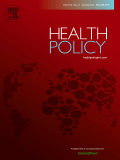
Christina Fastl, Brecht Devleesschauwer, Dieter van Cauteren, Adrien Lajot, Mathias Leroy, Valeska Laisnez, Carole Schirvel, Romain Mahieu, Denis Pierard, Charlotte Michel & Stéphanie Jacquinet
Archives of Public Health Volume 78, Article number: 92 (2020)
Abstract
BACKGROUND
Legionnaires’ disease (LD) is a severe bacterial infection causing pneumonia. Surveillance commonly underestimates the true incidence as not all cases are laboratory confirmed and reported to public health authorities. The aim of this study was to present indicators for the impact of LD in Belgium between 2013 and 2017 and to estimate its true burden in the Belgian population in 2017, the most recent year for which the necessary data were available.
METHODS
Belgian hospital discharge data, data from three infectious disease surveillance systems (mandatory notification, sentinel laboratories and the national reference center), information on reimbursed diagnostic tests from the Belgian National Institute for Health and Disability Insurance and mortality data from the Belgian statistical office were used. To arrive at an estimate of the total number of symptomatic cases in Belgium, we defined a surveillance pyramid and estimated a multiplication factor to account for LD cases not captured by surveillance. The multiplication factor was then applied to the pooled number of LD cases reported by the three surveillance systems. This estimate was the basis for our hazard- and incidence-based Disability-Adjusted Life Years (DALYs) calculation. To account for uncertainty in the estimations of the DALYs and the true incidence, we used Monte Carlo simulations with 10,000 iterations.
RESULTS
We found an average of 184 LD cases reported by Belgian hospitals annually (2013–2017), the majority of which were male (72%). The surveillance databases reported 215 LD cases per year on average, 11% of which were fatal within 90 days after diagnosis. The estimation of the true incidence in the community yielded 2674 (95% Uncertainty Interval [UI]: 2425–2965) cases in 2017. LD caused 3.05 DALYs per case (95%UI: 1.67–4.65) and 8147 (95%UI: 4453–12,426) total DALYs in Belgium in 2017, which corresponds to 71.96 (95%UI: 39.33–109.75) DALYs per 100,000 persons.
CONCLUSIONS
This analysis revealed a considerable burden of LD in Belgium that is vastly underestimated by surveillance data. Comparison with other European DALY estimates underlines the impact of the used data sources and methodological approaches on burden estimates, illustrating that national burden of disease studies remain essential.
Read the full article in Archives of Public Health



